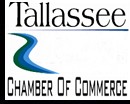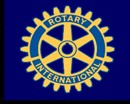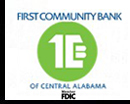|
Flying again 70 years later
By Michael Butler
Robert Scroggins just went airborne again, some 70 years after his service during World War II. Recently, the former B-17 bombardier climbed back into the "Aluminum Overcast" at Montgomery's Dannelly Field.
"They didn't charge me to ride on it. They were getting $400 per ride," the military veteran stated. "The crew chief on the plane when we landed said, 'Hurry up and get off. We've got to get some paying customers.'"
The Flying Fortress as it is commonly known, was a heavy bomber aircraft used primarily during World War II.
Scroggins saw his share of combat from the bombardier's position of the aircraft. He estimates that he flew on about 50 missions. Three times his plane was shot down.
His war experience almost never happened. After Japan's bombing of Pearl Harbor in 1941, the 18-year-old visited the Air Force's Montgomery recruiting station to enlist.
"I took the physical and was four pounds underweight," said Scroggins, who weighed a little over 100 pounds at the time. "I went across the street and bought four pounds of bananas. I ate them and came back and hadn't gained an ounce.
"The sergeant said, 'Son, you want to get in don't you?' I said, 'Yes sir, I do.' He said, 'The only thing that weighs inside of you that weighs outside of you is water.' So, I stood on the scales buck naked and he brought me glasses of water until he finally said that's close enough."
Scroggins trained at Maxwell in Montgomery, then transferred to Selma and came back to Tallassee to get married. Training followed in Texas and California. He was then sent overseas with the 9th Air Force, 95th Bomb Group.
"In those days you had to fly 25 missions, and then they all came home except me," Scroggins recalled.
At 93 today, Scroggins can recall the events of the war like it was yesterday. "On the fourth day of January in 1944 on a raid over to Germany, we got shot up real bad. One engine was on fire. We tried to make it back to England. We didn't make it. We went down in the North Sea on a very, very rough day. The way the British wrote up the weather that day said, 'It was bitterly cold with a freshening wind.'
"(It) was the scaredest moment of my whole life. I would be the last person off of the airplane. We had practiced this several times. I crawled up under a radio set and braced my head against it. When we crashed, as soon as we hit we went under and popped back up. I couldn't get my nose out from under that water. I know it wasn't but a few seconds, but it seemed like forever. I finally decided I could duck down and get out from under that radio and stand up in water that was knee deep. The plane was sinking fast."
Scroggins added that the B-17 had two inflatable life rafts, but only one functioned properly. The other had to be pumped up manually with a foot pump.
"We got the two rafts tied together. The British sent a sea plane to try and pick us up. It was called a Walrus. He could not land because the sea was so rough. Those waves looked like mountains. It was freezing. He dropped smoke bombs all around us. Not too many miles away was a British destroyer, the HMS Verdun. It was a World War I ship. It was made the last week of the war.
"He shot a rope out there to us and he missed. He came back around and said he couldn't stop because of the submarines in the area. Anyway, he shot another one out and we got a hold of that one. They pulled us all up on the deck and ripped our clothes off. They started dashing water on us and brought out a little wooden keg and opened it up. It was rum. I couldn't drink it. They took me down to the captain's quarters. He had a fireplace just like you have in your house. He sat me down in front of the fireplace and I started getting warm."
Another touchy moment came when Scroggins boarded a rescue boat from the destoyer.
"They threw a rope down and put you in a canvas seat and slid you down to that smaller ship. That was more frightening than the crash was."
In July of 1944, Scroggins joined forces with the 56th Fighter Group and Col. Hubert Zemke. "He was the best fighter pilot in the whole army," Scroggins said. "He had gotten a hold of a droopsnoot (a modified P-38). They had taken the guns out of the nose of that plane and put a plexiglass nose on it. They needed a small, crazy bombardier, because there was no way out of it. They took the top off of the thing, crammed you in there and put the top back on it. You didn't have to have a parachute.
"(Zemke) wrote a book after the war. There was a page in there that said, 'When Scroggins released the bombs, we took a terrific hit. The plane went into a right had spin. I pulled the plane out of a spin and looked down to the right and the prop was gone and the motor was gone. I looked out to the left and that motor was still running but leaking oil real bad.'
"We got it back to England and went in for a landing. I guess we were going too fast. We didn't have any brakes. We went off the runway and down across a farmer's field and tore up the airplane. I had to lay in that nose compartment until somebody got out there with some wrenches to take the top off and let me out."
In August of '44, Scroggins' and his crew were bombing the bridges in Germany. "We were to bomb the bridge in Cologne," he said. "We were leading the entire 8th Air Force. That was supposed to be an honor. We had a general flying with us in the co-pilot's seat. He was in command of the whole thing. Just as I started the bomb run, we get a big hit right in the nose. It knocked me out of my seat back on top of the navigator. It killed the navigator.
"It cut my oxygen supply off. I was wounded in my head, my right hand and both legs. The head wound was the most frightening. It was just a scratch, but the blood was coming down into my eyes. You were feeling to see if you had a top on your head. I got (the oxygen) hooked back up, got back into the bomb site and finished the bomb run.
"We got back as far as Brussels, Belgium. I must have had a half a dozen tetanus shots over the next two or three days. I got back to England. The surgeon that was going to operate on me said, 'Boy, what part of Alabama are you from?' I said, 'You wouldn't know anything about it.' He said, 'What (is) it?' I said, 'Well, it (is) Tallassee, Alabama.' He said, 'Hell, I'm from Clanton, Alabama.' It was Dr. Sam Upchurch. He came back to Birmingham and made a fortune in plastic surgery, but he died early in life."
Scroggins finally got his call to come home and flew back in a B-17.
"We landed in Iceland and refueled in Connecticut. A Red Cross woman came running up with gallons of ice cold milk and cookies. We hadn't had any of that in three years."
Scroggins got back to Atlanta and took the midnight train to Montomery before hopping aboard an Ingram Bus headed for his hometown. He then met his father at his store in East Tallassee.
"I said, 'Daddy can I take the truck and go see my wife and daughter that was born.' I never had seen her. She was walking and talking. He said, 'Yeah, but how 'bout delivering this on the way?' That was my welcoming back home."
Scroggins then enlisted in the National Guard. He also worked as the postmaster in Tallasssee for 35 years. He retired from both on the same day at age 60.
The Experimental Aircraft Association (EAA) handled the Montgomery B-17 flight a few weeks ago that for Scroggins was a real treat.
"We flew all around Montgomery. I tried to get them to fly to Tallassee, but they had a set route they had to fly. I got to sit up in the bombardier's seat. When we got back down on the ground I told the pilot how much I really enjoyed it. I said there's one thing different. There was nobody shooting at me."
 Video of Scroggins' Flight (Courtesy of Ashley Merrett) Video of Scroggins' Flight (Courtesy of Ashley Merrett)
 WTLS Radio Interview WTLS Radio Interview
Send
Comments
|























